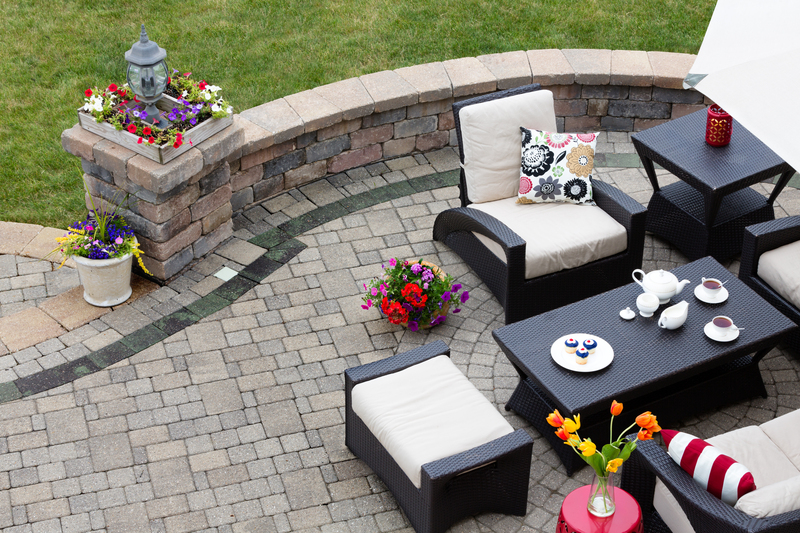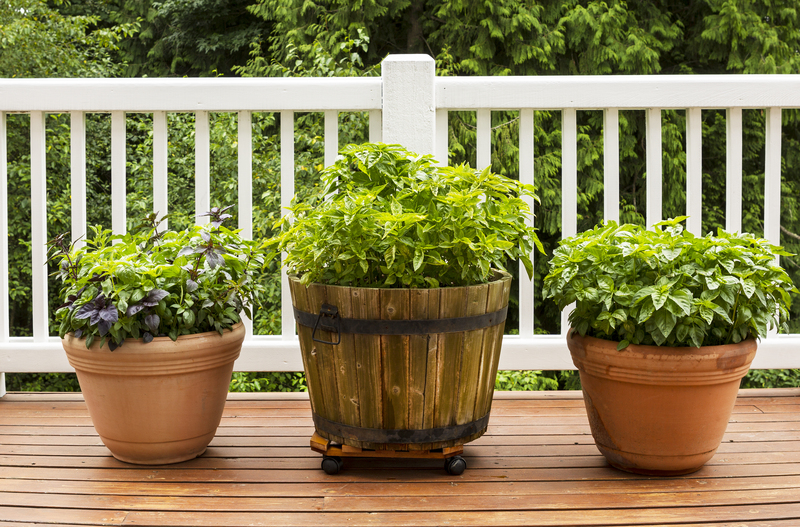Unleashing Potential: Kickoff Steps for a Garden Makeover
Posted on 30/08/2025
Unleashing Potential: Kickoff Steps for a Garden Makeover
Your garden is more than just an extension of your home--it's an opportunity to showcase creativity and unlock outdoor potential. But where should you begin when your green space craves new life? If you've ever gazed at your backyard plotting a garden makeover, read on. This comprehensive guide unveils the first essential steps toward transforming your ordinary yard into an extraordinary retreat.
Why Consider a Garden Makeover?
The allure of an outdoor sanctuary is undeniable. Besides increasing property value, a beautifully renovated garden provides space for relaxation, entertaining, and connecting with nature. If your garden's design feels tired, underutilized, or simply overwhelming, a garden transformation can provide:
- Improved aesthetics and curb appeal
- Increased functionality for outdoor living
- Personalized spaces tailored to your lifestyle
- Enhanced sustainability and biodiversity
- Wellbeing benefits from more time outdoors
Kickstarting a garden renovation can feel daunting, yet with clear steps, the journey becomes manageable and exciting. Unleash your garden's hidden potential with our expert-approved roadmap.

Step One: Assess and Analyze Your Existing Garden
Before diving into the creative aspects of a garden makeover, pause to truly understand your current landscape. Assessing your existing garden will help you recognize strengths, problem areas, and untapped opportunities. Consider:
- Size and layout: Map the boundaries and key features
- Light and shade: Observe sun exposure throughout the day
- Soil conditions: Test soil pH and fertility
- Drainage: Note any waterlogged or dry zones
- Existing plants: Identify plants to keep, move, or remove
- Structures and hardscape: Inspect fences, patios, paths, and sheds
Pro Tip: Create a garden journal, taking notes and sketching layouts to reference throughout your transformation journey.
Questions to Guide Your Assessment
- What do you love about your current garden?
- Which areas feel underused or problematic?
- Are there views you want to highlight or screen?
- How do pets and children use the space?
Armed with this insight, you can make informed decisions that maximize your garden's assets and address its weaknesses.
Step Two: Define Your Garden Makeover Goals
Clarity in purpose leads to a more satisfying outcome. Ask yourself: What do I want from my outdoor space? Popular goals for garden transformations include:
- Creating an outdoor dining zone
- Building a productive veggie plot or herb garden
- Adding play areas for kids or pets
- Establishing a wildlife-friendly habitat
- Designing a low-maintenance landscape
- Installing water features for tranquility
List your must-haves, nice-to-haves, and non-negotiables. This will help when balancing dreams with your space and budget.
Setting Realistic Expectations
While it's tempting to aim for a full-scale transformation at once, breaking the project into phases is often more practical and less overwhelming. Prioritize areas that will create the biggest impact early on, such as patios or main borders.
Step Three: Gather Garden Inspiration and Design Ideas
The next step in any garden renovation is to fuel your creativity and collect garden design inspiration. Browse garden magazines, websites, social media channels like Pinterest and Instagram, and local garden tours to discover:
- Planting schemes that suit your climate and taste
- Layout ideas--geometric, curved, or free-flowing?
- Color palettes for flowers and hard landscaping
- Themes such as modern, cottage, Mediterranean, or wildlife-friendly
- Garden features like pergolas, fire pits, or water fountains
Keep a scrapbook or digital mood board to collate colors, textures, and features that inspire you. This will serve as a valuable reference when moving to the design stage.
Step Four: Plan Your New Garden Layout
Effective planning is the foundation of a successful garden overhaul. Drafting a simple layout--either by hand or using garden design software--lets you visualize your transformed space before you start digging. Key steps in planning include:
- Draw a base plan to scale, marking boundaries and existing features
- Designate zones for dining, relaxing, play, and planting
- Map out walkways and sightlines
- Position major features like patios, decks, and structures
- Select focal points such as a specimen tree, sculpture, or pond
Balancing Practicality and Beauty
Remember to direct foot traffic efficiently, ensure safe surfaces, and create flow between different areas. For small gardens, multi-use features (such as built-in benches with storage) help maximize function. For large gardens, consider dividing the space with hedges or trellis to create "garden rooms" with distinct vibes.
Step Five: Choose Plants for Your New Look
No garden makeover is complete without thoughtful planting. The right plants add color, texture, fragrance, and year-round interest to your outdoor oasis. When selecting plants, keep in mind:
- Climate suitability (local or drought-tolerant species thrive)
- Sun and shade preferences
- Maintenance needs (low vs. high care plants)
- Seasonal interest (so there's always something to enjoy)
- Wildlife value (pollinator-friendly plants attract birds and bees)
Mix perennials, annuals, shrubs, and trees for structure and continual bloom. If you want instant impact, use some larger, mature specimens--just ensure they won't outgrow your space.
Tip: Visit local nurseries for advice or consult landscaping professionals if you're unsure about plant choices.
Step Six: Budget and Timeline for Your Garden Project
Now, ground your dreams in reality. Determining your budget is crucial for a successful garden renovation project. Consider both material costs (plants, paving, furniture, lighting) and potential labor costs if hiring help. Prioritize must-have features and look for savings by:
- Phasing work over months or years
- DIY-ing simpler elements (like painting fences or planting beds)
- Repurposing existing materials (e.g., upcycling old bricks or containers)
Create a timeline that aligns work with seasonal opportunities (such as planting in spring or fall) and factors in lead times for hardscaping and delivery.
Sample Garden Makeover Budget Breakdown:
- Plants and soil: 30%
- Paving and structures: 40%
- Furniture and features: 20%
- Lighting and irrigation: 10%
Keep flexibility in your plan to accommodate surprises or new ideas that emerge during the process.
Step Seven: Gather Tools, Supplies, and Support
Preparation is key to a smooth garden makeover journey. Before breaking ground, check that you have:
- Essential garden tools (spade, fork, rake, pruners, wheelbarrow, gloves)
- Materials (plants, compost, mulch, stones, etc.)
- Permits (if constructing large features or removing trees)
- Friends, family, or professionals to help with heavy lifting or specialist tasks
Ordering plants and materials ahead of time avoids frustrating delays and lets you enjoy the process--whether you're relaying a path or planting a new border.
Step Eight: Start Your Garden Makeover--One Step at a Time
With your plan in place, it's time to take action. Start with the "bones" of the garden--hardscaping, structures, and borders--before moving on to planting and finishing touches. Stay flexible, take photos to track progress, and enjoy the transformation as your ideas become reality.
- Keep your vision flexible: Nature might surprise you--embrace change!
- Small changes make a big difference: Simple improvements, like new mulch or a feature pot, add instant impact.
- Celebrate each milestone: Completing one area will motivate you for the next phase.

Garden Makeover FAQs
How can I makeover my garden on a budget?
Start small: Prioritize one feature (like a flower bed or social area) at a time. Upcycle containers, divide plants to multiply for free, and check local plant swaps. Even fresh paint on fences or DIY stepping stones can refresh the look affordably.
What are the easiest plants for beginners in a new garden?
Choose resilient, low-maintenance plants such as lavender, catmint, hostas, daylilies, and ornamental grasses. Native plants are an excellent choice for their adaptability and benefit to local wildlife.
How do I create privacy in my redesigned garden?
Incorporate hedges, bamboo screens, or climbing plants on trellises for living privacy walls. Consider strategically placed structures such as pergolas or shade sails for both privacy and style.
Conclusion: Let Your Garden Transformation Begin
The journey to unleashing your garden's true potential begins with these pivotal steps. From honest assessment and inspiration-gathering to practical planning and vibrant planting, every phase lays the foundation for a space that reflects your dreams and lifestyle.
Whether you're aiming for a complete garden renovation or a series of subtle updates, the key is to start--one small change at a time. So put on your gloves, trust your vision, and let the transformation flourish!
Ready to refresh your outdoor space? Bookmark this guide, and let your garden makeover adventure begin--your oasis awaits!

